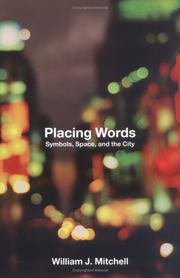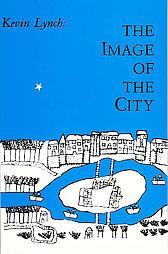| Listing 1 - 10 of 18 | << page >> |
Sort by
|
Book
ISBN: 9783037786581 3037786582 Year: 2021 Publisher: Zurich Lars Müller Publishers
Abstract | Keywords | Export | Availability | Bookmark
 Loading...
Loading...Choose an application
- Reference Manager
- EndNote
- RefWorks (Direct export to RefWorks)
The shift towards digital modes of production has fundamentally changed both cartography and graphic design. The omni-present computer, the interactive possibilities of digital media and the direct exchange of visual information through networks have blurred the distinction between designers and users of visual information. Blind Maps and Blue Dots is the first work to explore the disappearing boundaries between producers and users of maps. Using three mapmaking practices as examples - the Blue Dot, the location function in Google Maps; the Strava Global Heatmap, a world map showing the activities of a fitness app; and the 'Situation in Syria' maps, a regularly updated map of the Syrian conflict made by an Amsterdam teenager - renowned designer Joost Grootens shows the blurring of the binary distinction between producing and using, ultimately offering a whole new approach to graphic design.
Cartography --- Graphic design --- Information visualization. --- grafisch ontwerp --- 766.022 --- cartografie --- informatiedesign --- information design --- grafische vormgeving --- grafisch design --- Graphic arts --- digital maps --- masters theses --- graphic arts --- maps [documents] --- dot maps --- cartography [discipline] --- onderzoek in de kunsten --- Syria
Book
ISBN: 9789057595714 9057595710 9789460581120 9460581129 Year: 2013 Publisher: Antwerpen Amsterdam Luster Podium
Abstract | Keywords | Export | Availability | Bookmark
 Loading...
Loading...Choose an application
- Reference Manager
- EndNote
- RefWorks (Direct export to RefWorks)
Geschiedenis van de cartografie.
Geodesy. Cartography --- Geographers. Cartographers --- Cartography --- History --- Cartes --- Miscellanea --- World maps --- aardrijkskunde --- geografie --- cartografie --- cultuurgeschiedenis --- cultuurfilosofie --- 130.2 --- 528 --- PXL-Media & Tourism 2019 --- wereldatlas --- wereldgeschiedenis --- landkaarten --- Cartografie --- Kaarten --- Geschiedenis --- grafisch design --- grafische vormgeving --- informatiedesign --- information design --- 766.022 --- Kaart (geografie) --- Geneeskunde --- Techniek (wetenschap) --- Atlas --- Museum

ISBN: 1933820063 9781933820064 Year: 2008 Publisher: Brooklyn, N.Y. Rosenfeld Media
Abstract | Keywords | Export | Availability | Bookmark
 Loading...
Loading...Choose an application
- Reference Manager
- EndNote
- RefWorks (Direct export to RefWorks)
consumentengedrag --- 766.022 --- 766.01 --- 745.01 --- informatiedesign --- designtheorie --- grafisch design --- grafische vormgeving --- grafisch ontwerp --- design --- productdesign --- Human engineering. --- Industrial design --- Methodology. --- Human engineering --- Design, Industrial --- Ergonomics --- Human factors in engineering design --- Methodology --- Mechanical drawing --- New products --- Design --- Bioengineering --- Environmental engineering --- Industrial engineering --- Human comfort --- Human-robot interaction --- #SBIB:309H1720 --- Informatiekunde, informatie management
Book
ISBN: 9783836528795 3836528797 Year: 2012 Publisher: Keulen Taschen
Abstract | Keywords | Export | Availability | Bookmark
 Loading...
Loading...Choose an application
- Reference Manager
- EndNote
- RefWorks (Direct export to RefWorks)
Our everyday lives are filled with a massive flow of information that we must interpret in order to understand the world we live in. Considering this complex variety of data floating around us, sometimes the best -- or even only -- way to communicate is visually. This unique book presents a fascinating perspective on the subject, highlighting the work of the masters of the profession who have created a number of breakthroughs that have changed the way we communicate. Information Graphics has been conceived and designed not just for graphics professionals, but for anyone interested in the history and practice of communicating visually. The in-depth introductory section, illustrated with over 60 images (each accompanied by an explanatory caption), features essays by Sandra Rendgen, Paolo Ciuccarelli, Richard Saul Wurman, and Simon Rogers; looking back all the way to primitive cave paintings as a means of communication, this introductory section gives readers an excellent overview of the subject. The second part of the book is entirely dedicated to contemporary works by today's most renowned professionals, presenting 200 graphics projects, with over 400 examples -- each with a fact sheet and an explanation of methods and objectives -- divided into chapters by the subjects Location, Time, Category, and Hierarchy."--Publisher description.
grafische vormgeving --- grafisch ontwerp --- grafisch design --- informatiedesign --- bewegwijzering --- 766.022 --- visualiseren --- informatie --- data-analyse --- statistiek --- mapping --- diagrammen --- Infografiek --- PXL-Music 2017 --- Visual communication --- Information visualization --- Graphic arts --- Communication --- Théorie de l'information --- Cartographie --- Visual communication. --- Datavisualisatie --- Informatieverwerking ; grafisch --- Graphic signs --- Documentation and information --- Mass communications --- Computer. Automation --- graphic design --- grafische communicatie --- datavisualisatie

ISBN: 0262633221 Year: 2005 Publisher: Cambridge MIT
Abstract | Keywords | Export | Availability | Bookmark
 Loading...
Loading...Choose an application
- Reference Manager
- EndNote
- RefWorks (Direct export to RefWorks)
Communication in architecture. --- Cities and towns. --- Public spaces. --- Cities and towns --- Communication in architecture --- Public spaces --- 007 --- 711.4 --- 72 --- informatiedesign --- 766.022 --- openbare ruimte --- stedelijkheid --- grafische vormgeving --- designtheorie --- grafisch design --- grafisch ontwerp --- signalisatie --- bewegwijzering --- information design --- Public places --- Social areas --- Urban public spaces --- Urban spaces --- Communicative architecture --- Architecture --- Global cities --- Municipalities --- Towns --- Urban areas --- Urban systems --- Human settlements --- Sociology, Urban --- Communicatie --- Stedenbouw --- Architectuur
Book
ISBN: 9780262313971 0262313979 9780262313964 0262313960 9780262518505 0262518503 0262313987 Year: 2013 Publisher: Cambridge, Massachusetts The MIT Press
Abstract | Keywords | Export | Availability | Bookmark
 Loading...
Loading...Choose an application
- Reference Manager
- EndNote
- RefWorks (Direct export to RefWorks)
Organizing is such a common activity that we often do it without thinking much about it. In our daily lives we organize physical things -- books on shelves, cutlery in kitchen drawers -- and digital things -- Web pages, MP3 files, scientific datasets. Millions of people create and browse Web sites, blog, tag, tweet, and upload and download content of all media types without thinking "I'm organizing now" or "I'm retrieving now." This book offers a framework for the theory and practice of organizing that integrates information organization (IO) and information retrieval (IR), bridging the disciplinary chasms between Library and Information Science and Computer Science, each of which views and teaches IO and IR as separate topics and in substantially different ways. It introduces the unifying concept of an Organizing System -- an intentionally arranged collection of resources and the interactions they support -- and then explains the key concepts and challenges in the design and deployment of Organizing Systems in many domains, including libraries, museums, business information systems, personal information management, and social computing. Intended for classroom use or as a professional reference, the book covers the activities common to all organizing systems: identifying resources to be organized; organizing resources by describing and classifying them; designing resource-based interactions; and maintaining resources and organization over time. The book is extensively annotated with disciplinary-specific notes to ground it with relevant concepts and references of library science, computing, cognitive science, law, and business. - Publisher.
informatiewetenschap --- 02 --- 766.022 --- grafisch design --- computers --- grafisch ontwerp --- grafische vormgeving --- informatiedesign --- classificatiesystemen --- classificatie --- nieuwe media --- bibliotheken --- bibliotheekwetenschap --- bibliotheconomie --- Information organization --- Information resources management --- Metadata --- E-books --- Information organization. --- Information resources management. --- Metadata. --- Data about data --- Meta-data --- Corporations --- Information resource management --- Information systems management --- IRM (Information resources management) --- Management --- Management information systems --- Information storage and retrieval --- Organization of information --- Information science --- Information storage and retrieval systems
Book
ISBN: 9781118314043 9781118420065 9781118421598 9781118431641 1118314042 9786613905031 1118420063 1118421590 1283592584 Year: 2012 Publisher: Hoboken John Wiley & Sons
Abstract | Keywords | Export | Availability | Bookmark
 Loading...
Loading...Choose an application
- Reference Manager
- EndNote
- RefWorks (Direct export to RefWorks)
Transform your marketing efforts through the power of visual content In today's fast-paced environment, you must communicate your message in a concise and engaging way that sets it apart from the noise. Visual content - such as infographics and data visualization - can accomplish this. With DIY functionality, The Power of Infographics will teach you how to find stories in your data, and how to visually communicate and share them with your audience for maximum impact. The Power of Infographics will show you the vast potential to using the communication medium as a marketing tool by ...
Graphic signs --- Artificial intelligence. Robotics. Simulation. Graphics --- Graphic arts --- Mass communications --- grafische vormgeving --- grafisch ontwerp --- grafisch design --- informatiedesign --- Column five --- 766.022 --- 655.26 --- visuele communicatie --- infographics --- storytelling --- grafische vormgeving, typografie --- Visual communication. --- Communication --- Information visualization. --- Business presentations. --- Presentation graphics software. --- Graphic methods. --- Business presentations --- Information visualization --- Presentation graphics software --- Visual communication --- Graphic communication --- Imaginal communication --- Pictorial communication --- Business graphics software --- Business presentation software --- Presentation software (Presentation graphics) --- Application software --- Data visualization --- Visualization of information --- Information science --- Visual analytics --- Communication, Primitive --- Mass communication --- Sociology --- Presentations, Business --- Business communication --- Graphic methods --- Infografía --- Diseño gráfico --- Comunicación visual
Book
ISBN: 9780822356455 9780822356578 0822356570 0822356457 9780822356578 0822356570 Year: 2014 Publisher: Durham, N.C. Duke University Press
Abstract | Keywords | Export | Availability | Bookmark
 Loading...
Loading...Choose an application
- Reference Manager
- EndNote
- RefWorks (Direct export to RefWorks)
Paper Knowledge is a remarkable book about the mundane: the library card, the promissory note, the movie ticket, the PDF (Portable Document Format). It is a media history of the document. Drawing examples from the 1870s, the 1930s, the 1960s, and today, Lisa Gitelman thinks across the media that the document form has come to inhabit over the last 150 years, including letterpress printing, typing and carbon paper, mimeograph, microfilm, offset printing, photocopying, and scanning. Whether examining late-nineteenth-century commercial, or "job" printing, or the Xerox machine and the role of reproduction in our understanding of the document, Gitelman reveals a keen eye for vernacular uses of technology. She tells nuanced, anecdote-filled stories of the waning of old technologies and the emergence of new. Along the way, she discusses documentary matters such as the relation between twentieth-century technological innovation and the management of paper, and the interdependence of computer programming and documentation. Paper Knowledge is destined to set a new agenda for media studies. Review: "In this thoroughly media archaeological book, Lisa Gitelman folds media history and discovers its edges by diving deep into the flatland of documents, reading technologies of duplication and dissemination from 19th century job printing to today's PDF. With implications for archival and information science, comparative media, digital humanities, and the history (and future) of texts, Paper Knowledge will be read, referenced, and reproduced - which is exactly what we want our documents to do." - Matthew Kirschenbaum, author of Mechanisms: New Media and the Forensic Imagination "Four intriguing essay make up this tantalising and ambitious short book. Each starts at a vivid point in the overlapping history of media and technology, and proceeds to meander around an ink-stained group of colourful characters and long-forgotten committees...Through these windows on the recent past, [Gitelman] subjects printing, copying, documents and paper to an analysis that is both fresh and grounded in the practices and prejudices of media studies [...] The strength of this bold volume is in its argument that we can learn a great deal if we focus, not only on what information they contain but what institutional and social function they serve; not what they're bound about but what they do." - Times Higher Education "Gitelman practices a kind of conceptual archeology without obeisance to the master, in an argument that stands well on its own... It's the first of the author's books I have read, but it won't be the last." - Inside Higher Ed
Documentation and information --- Communication and technology. --- Written communication --- Communication and culture. --- Authors and readers. --- Communication et technologie --- Communication écrite --- Communication et culture --- Ecrivains et lecteurs --- Social aspects. --- Aspect social --- cultuurfilosofie --- media --- mediakunde --- informatiewetenschap --- informatietheorie --- informatietechnologie --- informatiedesign --- pdf --- nieuwe media --- technologie --- reproductie --- boekdrukkunst --- papier --- communicatietheorie --- communicatie --- 007 --- 766.022 --- 130.2 --- mediatheorie --- Literacy --- Paper --- Papermaking --- Printing. --- Psychology --- Printing properties. --- History. --- Social Psychology. --- Communication écrite --- Authors and readers --- Communication and culture --- Communication and technology --- Written discourse --- Written language --- Communication --- Discourse analysis --- Language and languages --- Visual communication --- Technology and communication --- Technology --- Culture and communication --- Culture --- Readers and authors --- Authorship --- Social aspects --- anno 2010-2019 --- anno 2000-2009 --- anno 1800-1999 --- Documentaire informatie
Book
ISBN: 9783037781494 3037781491 Year: 2009 Volume: report 1 Publisher: Baden Lars Müller
Abstract | Keywords | Export | Availability | Bookmark
 Loading...
Loading...Choose an application
- Reference Manager
- EndNote
- RefWorks (Direct export to RefWorks)
Communication in design. --- Visual communication. --- Design --- Communication en design --- Communication visuelle --- Human factors. --- Facteurs humains --- Informatiemanagement --- Knowledge management. --- 766.01 --- 766(035) --- 766:681.3 --- Grafische vormgeving ; theorie ; encyclopedie van "universal knowledge" --- Internet ; websites ; i.v.m. kennisverwerving --- grafische vormgeving --- grafisch design --- grafisch ontwerp --- encyclopedieën --- internet --- archieven --- archivering --- databanken --- kennis --- classificatiesystemen --- naslagwerk --- bibliotheken --- Google --- YouTube --- Wikipedia --- webdesign --- universele kennis --- 766.022 --- Gebruiksgrafiek ; theorie, filosofie, esthetica --- Gebruiksgrafiek ; handboeken --- Gebruiksgrafiek ; digitale ; webtoepassingen ; computerprogramma's --- Communication in design --- Visual communication --- Graphic communication --- Imaginal communication --- Pictorial communication --- Communication --- Human factors in design --- Human engineering --- Human factors --- 766.12.01 --- Grafische industrie en ontwerp ; drager ; digitaal ; theorie, filosofie, esthetica

ISBN: 9780262120043 9780262620017 0262120046 0262620014 Year: 1977 Publisher: Cambridge, Mass. The M.I.T. Press
Abstract | Keywords | Export | Availability | Bookmark
 Loading...
Loading...Choose an application
- Reference Manager
- EndNote
- RefWorks (Direct export to RefWorks)
#SBIB:39A4 --- #SBIB:316.334.5U20 --- Toegepaste antropologie --- Sociologie van stad (buurt, wijk, community, stadsvernieuwing) --- Steden ; vormgeving ; analyse ; Los Angeles ; Boston ; Jersey --- 711.4(C) --- Stedenbouw. Ruimtelijke ordening ; vormgeving en analyse van de stad --- Economic geography --- Steden ; vormgeving ; analyse ; Boston, Jersey en Los Angeles --- Environmental planning --- stedenbouw --- architectuur --- stedelijkheid --- informatiedesign --- cartografie --- 711.1 --- 766.022 --- City planning --- Towns --- urban planning --- urban development --- Urban environment --- Landscaping --- design --- Ruimtelijke ordening --- #TCON:CCHTB --- 711.4 --- Verenigde Staten --- Lynch, Kevin --- Stedenbouw (theorie) --- 711.07 --- Stedenbouwkundigen --- Lynch, Kevin 1918-1984 (°Chicago, Illinois, Verenigde Staten) --- City planning - United States
| Listing 1 - 10 of 18 | << page >> |
Sort by
|

 Search
Search Feedback
Feedback About UniCat
About UniCat  Help
Help News
News